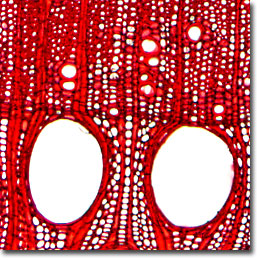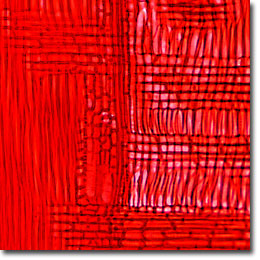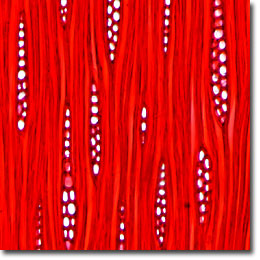The White Ash
The White Ash (Fraxinus americana) tree is a hardwood propagating throughout the eastern United States and Canada. These trees grow to a height between 20 and 120 feet, but are hampered by various insect and disease problems and are better suited for parks and campuses than for the average home site. The sapwood is nearly white, while the heartwood ranges from grayish brown to light brown and even pale yellow in color.

Cross Section

Radial Section

Tangential Section
The Ash (Oleceae or olive) family is a group of 65 species, most of which are deciduous trees of the North Temperate Zone, and serve as ornamental and timber trees. Ash trees grow very quickly in general and have strong wood, thus they endure storms far better than many rapid-growing species. In general, the foliage and fall color display is attractive, but varies from species to species. Ashes grow in most ordinary garden soils, but are not suitable for very dry sites or alkaline soils. Easily transplanted, the trees can be propagated from seeds and can even become a pest from profuse self-seeding.
Wood from the white ash is widely utilized for shovel, spade, rake and other long handles, because of its straightness of grain, stiffness, strength, good bending qualities and hardness. The wood is also used for bent parts in furniture, vehicle parts, railroad cars, sporting and athletic goods, boxes, baskets, crates, pallets, kitchen cabinets, mill products (such as trim), toys, woodenware, and novelties.
Microscopic examination of iron-alum hematoxylin and safranin stained thin sections (see the digital images presented above) reveals a porous wood with simple perforation plates. Parenchyma is paratracheal and paratracheal-zonate in late summer wood. Vessels are not very numerous, and inter-vessel pits are 3 to 6 micrometers in diameter and orbicular to short-oval in shape. Libriform fibers are thin to fairly thick-walled and fine to medium in texture. The rays are unstoried, homocellular, and 1 to 3 seriate.